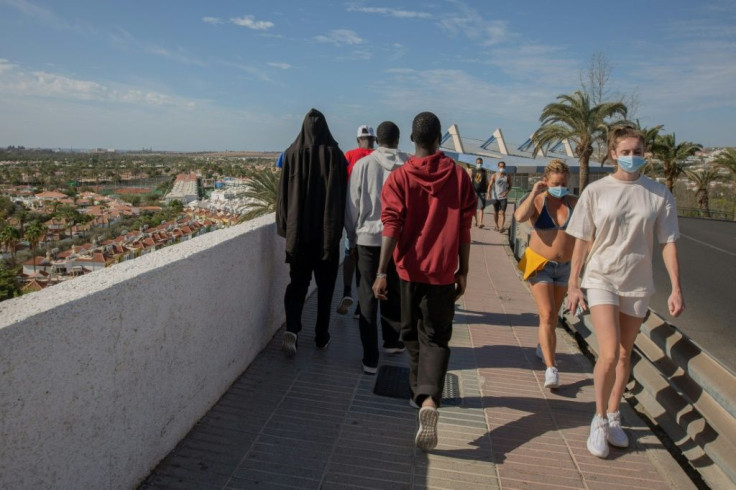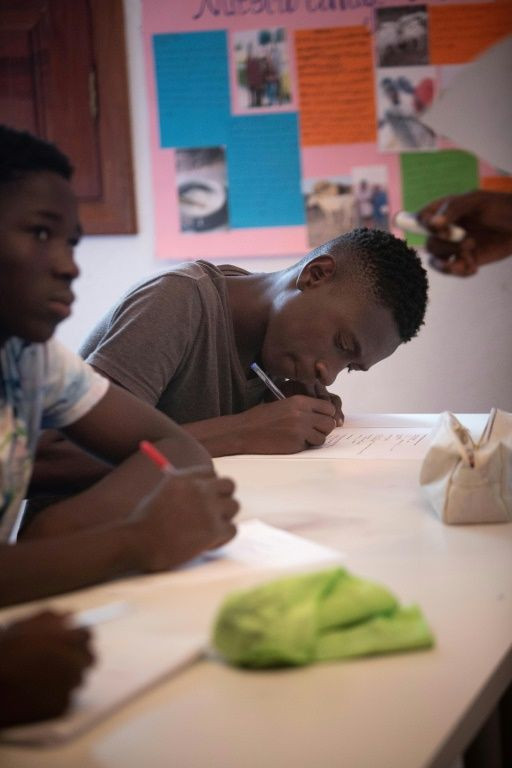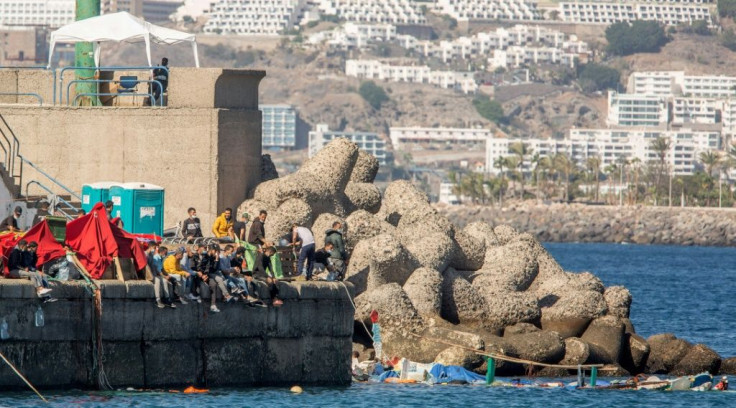For Canary Isles Tourism, Migrant Surge A New Nightmare
In a normal year, it would be high tourist season for the Canary Islands, but a huge influx of migrants has given the archipelago "a bad image," bar owner Miguel Gonzalez grumbles.
With migrant reception centres completely swamped after the arrival of more than 18,000 people this year -- 10 times the number in 2019 -- many have been put up in hotels and tourist apartments.
The Puerto Rico resort, where Gonzalez runs his bar, and other holiday hotspots would normally be full of tourists at this time of the year.
The coronavirus pandemic had already hit international travel, leaving spare rooms to house migrants temporarily.
"I have a client who's going to sue his travel agency. They never told him that Puerto Rico was full of migrants. He went to the beach and there were groups of 15 or 20 of them not wearing masks," the bar owner said.

"He didn't leave (the hotel) after that and decided to go back home," adds Gonzalez, whose Parada bar is located in southern Gran Canaria, the largest of Spain's Canary Islands.
Normally Puerto Rico's springlike climate during high season draws up to 25,000 visitors, mostly from Scandinavia.
But the resort, whose rocky ravines run down to the Atlantic seafront off the western coast of Morocco, is empty of tourists.
In their place are some 1,500 migrants staying at hotels perched on its steep hillsides.
The biggest surge has been this autumn, with more than 12,000 arrivals since September, bringing back memories of 2006 when some 30,000 migrants flocked to the islands.

Overwhelmed by the influx, the authorities have been setting up temporary encampments and housing new arrivals in accommodation normally used for tourists.
But the migrant crisis has compounded the misery for the islands' embattled tourism sector, which accounts for 35 percent of the Canaries' GDP and had been hoping to claw back some of its losses after a year blighted by the pandemic.
Regional statistics show the number of overnight stays in the Canaries slumped to 1.1 million in October, a fall of 86.7 percent compared with the same period in 2019.

"It's a real shame, there are 40 people (on the beach) when on any other November 24 you wouldn't be able to see the sand," said Carmelo Suarez, who runs a car hire business.
"We're not against migration but they need places to go. If a person spends money to come here, they don't want to share a hotel with a migrant," said Suarez, spokesman for a platform for the defence of tourism that is planning a demonstration on Friday.
In Puerto Rico, where few places are open, hundreds of young migrants are wandering along the beach or hanging out in parks.
The atmosphere is "very tense", says Eliazar Hernandez, a waiter at the Balcon Canario restaurant.
"Yesterday a customer told me: I've been here for four days, I've seen enough, I'm going back to Germany'," he told AFP.
Along the seafront, where the temperature is a balmy 25 degrees Celcius (77 degrees Fahrenheit), three shirtless Scandinavian pensioners walk past a group of Senegalese teenagers, all dressed in hoodies.
But not everyone seems bothered.
"I've spent a week here, my family asks me about the refugees, they've seen it on TV, (but) I have not seen them," shrugs Swedish tourist David Gustaffson sitting at a bar with a beer in hand.
Along the seafront, the huge Terraza Gran Canaria restaurant which has 60 staff, is closed. Outside, three employees are pinning up signs, one of which shows a coffin with the words "RIP hotel and catering sector".
"Tourists are cancelling their holidays, they're afraid and they're not coming," says Benaisa Mohamed, one of the staff who comes from Melilla, one of two Spanish enclaves in North Africa, his colleague from Sierra Leone nodding in agreement.
"We're all immigrants.. but letting them out like this, to freely wander the street?"
On the beach, Aliou Gueye, a gangly 17-year-old is playing football with some other youngsters.
"I want to stay here, I like it and I'm learning Spanish," he says.
© Copyright AFP 2024. All rights reserved.





















